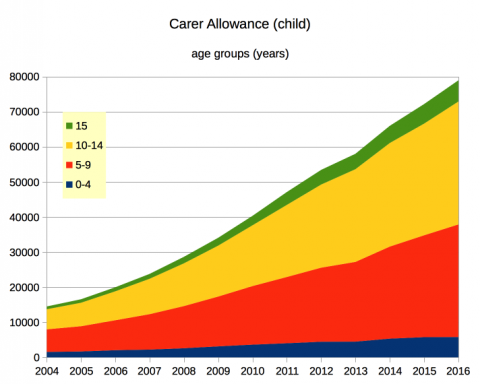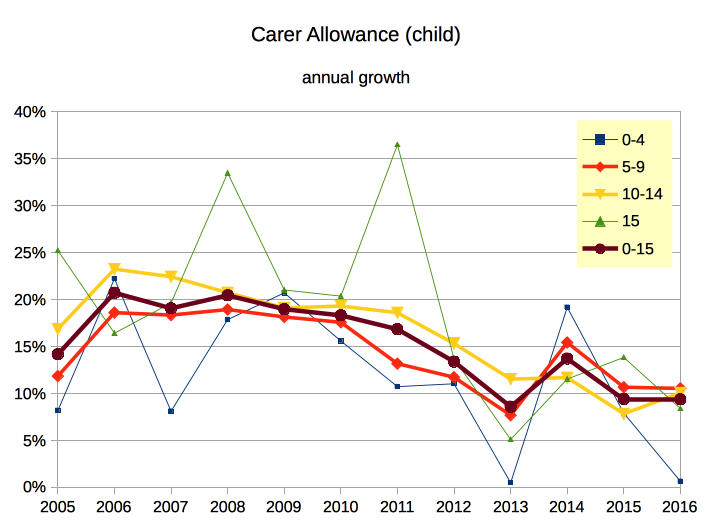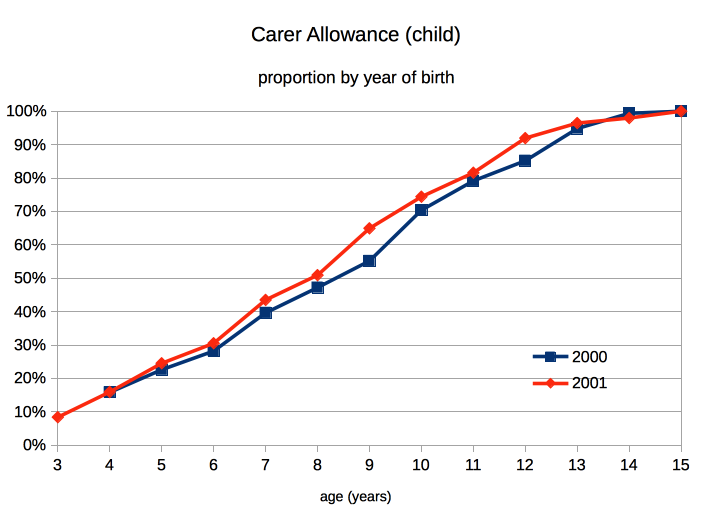
Media Release
The latest national data shows the number of children diagnosed with autism spectrum disorder (ASD) continues to grow at a substantial rate. In June 2016, there were 78,951 autistic children getting Carer Allowance (child) which is an increase of 9.4% from 2015. Another 2,000 children listed autism in their next three disabilities. In June 2015 there were 72,184 children and in June 2004, there were 14,495 children aged 0-15 years getting Carer Allowance (child) with ASD as their first-listed disability.
Just over 6,000 children were diagnosed with autism in the 2015-16 financial year; an average of 16.5 new autistic children each day. Over 2.46% of children aged 10-14 years are autistic.
In 2016, there are 62,609 boys and 16,342 girls. The male to female ratio is 3.8:1. There is serious concern that many girls miss out on diagnoses and on the services and supports that they need.
The good news is:
- growth in the number of autism diagnoses may be slowing down. Annual growth from 2004 to 2011 averaged 18.3% per year but from 2011 to 2016 annual growth averaged 10.9%.
- children may be getting their ASD diagnoses when they are a little younger.
The number of autistic people getting Carer Allowance (child) corresponds to the numbers of autistic people with severe or profound disability in the same age range reported in the Australian Bureau of Statistics (ABS) Survey of Disability, Ageing and Carers (SDAC).
The ABS SDAC data suggest increasing autism diagnoses are only partially due to more diagnoses of moderate or mild disability. In 2009, 26% of autistic people in the survey had moderate or mild disability. In 2012, after a 79% increase in numbers from 2009, 27% of autistic people have moderate or mild autism. Most of the increase was autistic people with severe or profound disability.
Governments seem “reluctant” to recognise or address the challenges that ASD presents.
The federal Health Department told Senate Estimates “The Department is not aware of any evidence of any major shifts in prevalence of autism in Australia.”
The ABS SDAC reported especially poor outcomes for autistic people in education and employment yet Governments in Australia have no discernible plan to improve outcomes for autistic citizens. Governments refuse to recognise that ASD is a distinct disability and the policies that aim to improve outcomes for people with disability simply leave autistic people behind. Federal Ministers for Disability refused to meet the ASD peak advocacy body through the whole 2013-16 term of government.
The NDIS is a major reform, but it does not address education and employment for people with disability.
The NDIA was surprised completely that autism emerged as the biggest distinct disability among NDIS participants. The NDIA’s planning does not allow for growing numbers of autistic participants.
Early intervention provides the best prospect for improving outcomes for autistic people. The NDIA is responsible for early intervention, but just 30% of autistic children are diagnosed by the NDIA’s 6 year old cut off. The claim that “Diagnosis [of ASDs] usually occurs around 3–4 years of age” is simply untrue. In Australia, over 70% of autistic children are diagnosed too late (after age 6 years) to access Government funding for early intervention.
Government and researchers focus on what may be a tiny proportion of over-diagnosis (2.04% of clinicians sometimes over-diagnoses) when the evidence shows that under-diagnosis and delayed diagnoses are much worse problems.
NDIA’s Early Childhood Early Intervention Approach makes parents to be responsible for delivering clinical early intervention. Research and expert opinions show parent-delivered early intervention is not evidence-based for autistic children. But just a few parents get NDIS funding for best-practice early intervention programs for their autistic child. The lifetime costs of services and supports is substantially increased for the growing number of autistic children that the NDIA denies effective early intervention.
Contact: Bob Buckley
email: convenor@a4.org.au
mobile: 04xx xxx xxx


see also:
| Attachment | Size |
|---|---|
| 20161122MR.docx (197.32 KB) | 197.32 KB |
| 20161122MR.pdf (323.24 KB) | 323.24 KB |